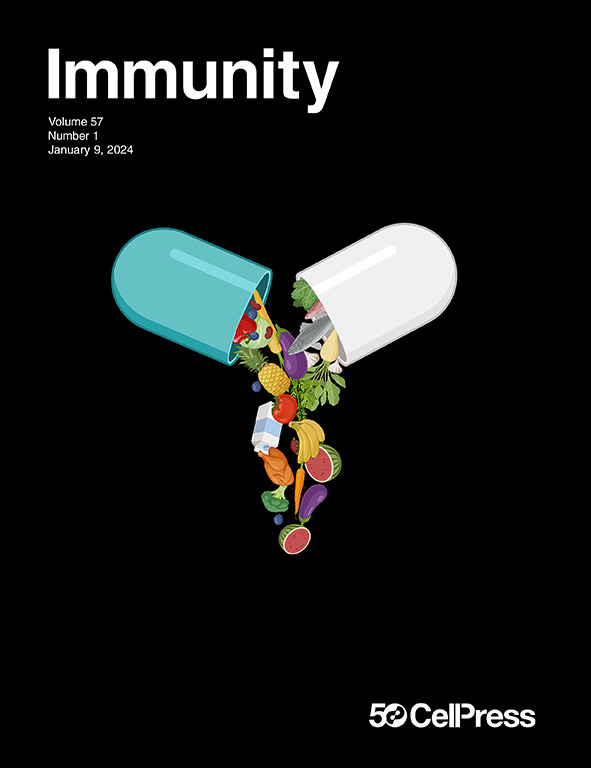Single-cell transcriptomic and functional studies identify glial state changes and a role for inflammatory RIPK1 signaling in ALS pathogenesis
IF 25.5
1区 医学
Q1 IMMUNOLOGY
引用次数: 0
Abstract
Amyotrophic lateral sclerosis (ALS) is a progressive neurodegenerative disease characterized by motor neuron loss. Microglia and astrocyte-driven neuroinflammation is prominent in ALS, but the cell state dynamics and pathways driving disease remain unclear. We performed single-nucleus RNA sequencing of ALS spinal cords and identified altered glial cell states, including increased expression of inflammatory and glial activation markers. Many of these signals converged on the inflammation and cell death regulator receptor-interacting protein kinase 1 (RIPK1) and the necroptotic cell death pathway. In superoxide dismutase 1 (SOD1)G93A mice, blocking RIPK1 kinase activity delayed symptom onset and motor impairment and modulated glial responses. We used human induced pluripotent stem cell (iPSC)-derived motor neuron, astrocyte, and microglia tri-cultures to identify potential biomarkers that are secreted upon RIPK1 activation in vitro and modulated by RIPK1 inhibition in the cerebrospinal fluid (CSF) of people with ALS. These data reveal ALS-enriched glial populations associated with inflammation and suggest a deleterious role for neuroinflammatory signaling in ALS pathogenesis.

单细胞转录组学和功能研究确定了胶质状态的变化和炎症RIPK1信号在ALS发病机制中的作用
肌萎缩性侧索硬化症(ALS)是一种以运动神经元丧失为特征的进行性神经退行性疾病。小胶质细胞和星形胶质细胞驱动的神经炎症在ALS中很突出,但细胞状态动力学和驱动疾病的途径尚不清楚。我们对ALS脊髓进行了单核RNA测序,并鉴定了神经胶质细胞状态的改变,包括炎症和神经胶质激活标记物的表达增加。许多这些信号聚集在炎症和细胞死亡调节受体相互作用蛋白激酶1 (RIPK1)和坏死细胞死亡途径上。在超氧化物歧化酶1 (SOD1)G93A小鼠中,阻断RIPK1激酶活性可延迟症状发作和运动损伤,并调节神经胶质反应。我们使用人类诱导多能干细胞(iPSC)衍生的运动神经元、星形胶质细胞和小胶质细胞三培养物来鉴定体外RIPK1激活时分泌的潜在生物标志物,并通过ALS患者脑脊液(CSF)中RIPK1的抑制来调节。这些数据揭示了ALS富集的胶质细胞群与炎症相关,并提示神经炎症信号在ALS发病机制中的有害作用。
本文章由计算机程序翻译,如有差异,请以英文原文为准。
求助全文
约1分钟内获得全文
求助全文
来源期刊

Immunity
医学-免疫学
CiteScore
49.40
自引率
2.20%
发文量
205
审稿时长
6 months
期刊介绍:
Immunity is a publication that focuses on publishing significant advancements in research related to immunology. We encourage the submission of studies that offer groundbreaking immunological discoveries, whether at the molecular, cellular, or whole organism level. Topics of interest encompass a wide range, such as cancer, infectious diseases, neuroimmunology, autoimmune diseases, allergies, mucosal immunity, metabolic diseases, and homeostasis.
 求助内容:
求助内容: 应助结果提醒方式:
应助结果提醒方式:


